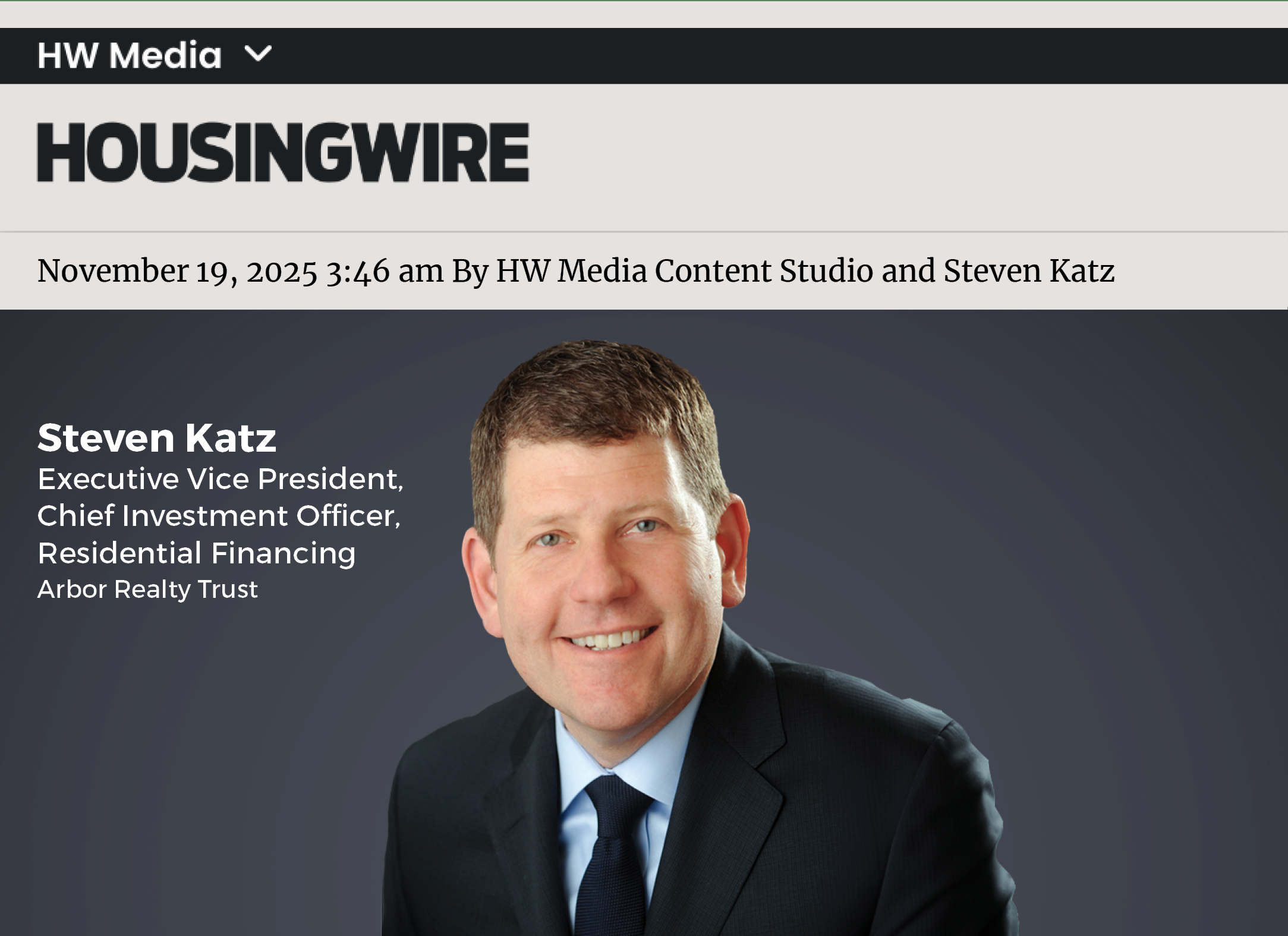Ivan Kaufman Reveals Why Arbor Is a Top-Performing REIT on NYSE Floor Talk
Arbor Realty Trust’s CEO discusses what sets Arbor apart and how it has thrived amid the pandemic
Most commercial mortgage REITs focus on one product line, but Arbor’s diverse platform has allowed it to stand out from the competition, noted Ivan Kaufman, the founder, chairman and CEO of Arbor Realty Trust, Inc. (NYSE: ABR), in an interview with NYSE Floor Talk’s Judy Shaw.
“In every single climate, we’re very active with different products depending where interest rates are, depending where market demand is, and depending on where the consumer preferences are. So we’re not just relying on one product and we have multiple income streams,” he said.
One business Arbor is particularly active in is single-family build-to-rent. Kaufman used his decades of experience in the single-family residential industry to successfully lead Arbor into the single-family rental (SFR) business and develop its own proprietary Single-Family Rental Portfolio platform in late 2019. Arbor was also one of the first lenders to enter the space and the business has grown significantly over the past few years.
Build-to-rent is a segment of the SFR market that has taken off due to the pandemic and millennials moving to the suburbs as they mature and start families.
“If people can’t afford to buy or home or it doesn’t fit their economic profile, they rent a home. Renting a home has become a very high in demand experience,” he noted.
Developers are capitalizing on this mounting demand for rental homes. They are buying land and building communities with homes specifically for rent, while offering amenities often found in apartment complexes. Kaufman noted that because of the efficiencies that have evolved over the last few years, builders are finding they can develop these communities at a similar cost to a multifamily property.
As build-to-rent gains attention, institutional investors are beginning to enter the space. Builders are seeing the benefits of selling a portion of their single-family communities to larger investors who will turn around and rent out those units, Kaufman explained.
Build-to-rent is “a great asset class to be in and I’m glad Arbor Realty Trust is front and center in that market,” he said. “It’s dominating our platform.”
For more insights, watch the full interview above.





